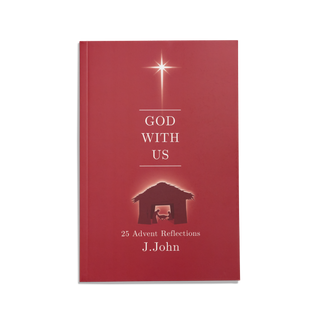How we view the world depends on what we believe. Whether we put our faith in there being a God or in there not being a God is a choice that acts like spectacles: it affects – or should affect – how we view the world.
So where the atheist sees in an event only the careless action of Nature (whatever he, she or it is), the believer sees deeper, finding a God-given meaning and purpose. Where the atheist sees beauty in the natural world but sees in it nothing more than the product of chance and time, the believer sees God’s creativity and care. In reality, many people who claim to be ‘unbelievers’ wear what we might call ‘mental bifocals’; faced with joy, beauty or tragedy in life they shift to focus through the lens of faith and inconsistently treat such things as having meaning and purpose. So even the most hardened atheist will, when cradling a new-born baby, move from a viewpoint that sees birth as simply the reproduction of the species to one of mystical wonder, joy and thanks.
This different perspective on life applies with the arrival of spring, a season that commences on Wednesday 20th March. (If you are south of the equator and observing summer now sliding into autumn, accept my apologies.) For the atheist, spring is nothing more than the inevitable product of a planet with a tilted axis: there must be seasons – spring is really just applied astronomy. And nothing more than that.
Yet of course we all feel that there’s more to spring than that. There is a rebirth to the season. Mysteriously, inexplicably, the world wakes up and we, in turn, become more alive with it. Spring refreshes and renews our minds, hearts and souls. To eyes that see through the spectacles of faith there is much more here than simply a change of season. We can see deeper. Let me suggest three thoughts to ponder.
First, spring speaks of the triumph of light over darkness. Slowly, the days grow longer. Daylight now occurs through much of our waking day; we open curtains earlier and close them later as winter’s all enveloping gloom slips away. We who trust in the One who put the stars in place see beyond astronomy and rejoice that we see light triumphing over darkness. In the great passage at the start of John’s Gospel that deals with the coming of Christ, we read in verse 5 that ‘the light shines in the darkness, and the darkness has not overcome it’. Spring is a visual reminder of the truth – much-needed these days – that, ultimately, light wins.
Second, spring is the triumph of life over death. Winter landscapes, full of dreary greys and browns, seem devoid of life. Spring suddenly brings to the natural world what can only be called a resurrection, with death replaced by life. We who know and love the story of Jesus see a deep echo here of the promise, sealed by the resurrection, that one day death’s reign will end.
Finally, spring is the triumph of hope over despair. I accept that winter has its fans amongst skiers, snowboarders and those sensitive to sunlight. Yet for most of us there is something gloomy about winter; particularly those grey, damp, sunless days that are such a feature of the British Isles. Indeed, if you suffer from SAD (seasonal affective disorder) winter is, in a real sense, dark and depressing. Spring, however, opens the curtains on life; it is the season where moods lighten, gloom lifts and hope dawns. To me spring echoes the experience of many when they come to faith in Christ; the clouds part, the sun shines and hope gleams in the darkest of lives. For those of us who live north of the equator there is something truly significant in the fact that Easter – the festival of resurrection – occurred in spring.
I love spring. I love what it is, but I love still more what I see in it: light, life and hope.
Look, the winter is past, and the rains are over and gone. The flowers are springing up, the season of singing birds has come, and the cooing of turtledoves fills the air.
(Song of Songs 2:11-12 NLT)
J.John
Reverend Canon




